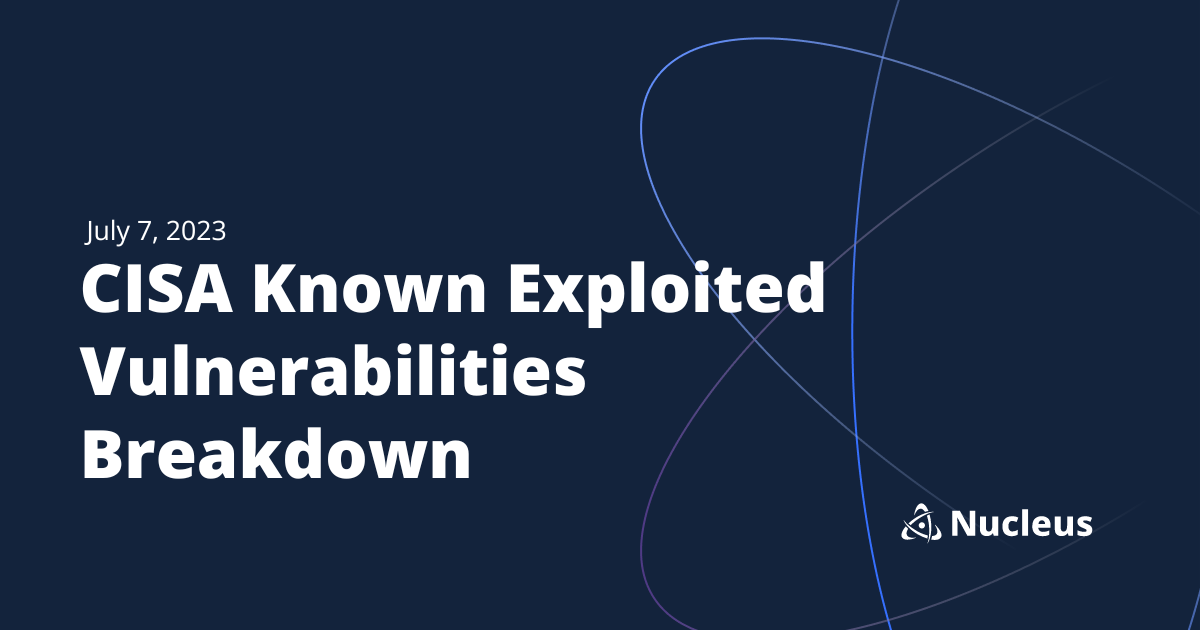July 7, 2023 CISA KEV Breakdown | Arm Mali

July 7: 1 New Vuln | CVE-2021-29256
In this CISA KEV Breakdown, one vulnerability in Arm’s Mali GPU Kernel was added to the KEV thanks to an Android security bulletin posted on the 5th which introduces a fix for Google Android 11/12/13 that resolves CVE-2021-29256 as well as a few other exploited bugs.
[wptb id=22281]Notable Vulnerability Additions
CVE-2021-29256 | Arm Mali GPU Kernel Use-After-Free
A vulnerability exists in Arm’s Mali GPU Kernel which can allow an attacker to escalate privileges thanks to freed memory that is exposed to unprivileged users. This vulnerability affects Bifrost r16p0 through r29p0 before r30p0, Valhall r19p0 through r29p0 before r30p0, and Midgard r28p0 through r30p0 as well as Google Android 11, 12 and 13 devices. An attacker would need to be able to access the GPU component of a vulnerable system locally in order to perform malicious operations, with failed exploitation likely leading to a denial of service or crashing of the system.
This vulnerability from 2021 was added to the KEV just now thanks to an Android Security Bulletin posted on the 5th of this month, with fixes released for CVE-2021-29256, CVE-2023-26083 and CVE-2023-2136. In the bulletin, Android specifies that these three vulnerabilities are under limited, targeted exploitation. CVE-2023-2136 was covered in our April 21 Breakdown post, and CVE-2023-26083 was covered on April 7.
It is important to continuously consider the security posture of edge devices especially that of mobile phones, as they are likely one of, if not the most prevalent device within any organization. A common attack vector for threat actors to carry out exploitation of Android devices is a maliciously hosted app through the Play Store. Attackers will attempt to mask malicious behavior in an already installed app, or mirror an already existing app in the Play Store in hopes that victims download the malicious version of the app instead. While this exploit can only be conducted locally, the ability for an attacker to gain access to a mobile device is considerably higher than that of other potentially vulnerable systems.
Security Advisory(s):
https://developer.arm.com/Arm%20Security%20Center/Mali%20GPU%20Driver%20Vulnerabilities
https://source.android.com/docs/security/bulletin/2023-07-01
← June 29, 2023 CISA Kev Breakdown
Click here to expand our CISA KEV Breakdown Frequently Asked Questions
- What makes for a notable addition?
- A notable addition can arise from many different characteristics. If a particular vulnerability is notable to the security community or a subset of the security community or if the EPSS score reveals notable information about the vulnerability, this can constitute further analysis. It may also be the case that a particular vulnerability shines a light on everyday users and we will highlight important information and key takeaways to ensure users and readers have easy access to actionable information.
- When is the Breakdown released?
- We aim to have our analysis of each KEV update posted within 24 hours of the time in which the Catalog is updated. See CISA’s full catalog here
- I am not bound by BOD 22-01 or federal regulations, why should the KEV concern me?
- CISA encourages all organizations to utilize the Catalog as an attribute in your vulnerability prioritization framework. Organizations looking to lessen the scope on known dangerous vulnerabilities and make a goal to remediate them can understand where they currently stand against what CISA has confirmed as exploited vulnerabilities in the wild. See CISA’s section on “How should organizations use the KEV catalog?” here.
- What is EPSS?
- EPSS is the Exploit Prediction Scoring System. It is an open, data-driven effort for estimating the likelihood (probability) that a software vulnerability will be exploited in the wild. See the EPSS home page on FIRST for more information here.
- What is the difference between EPSS probability and EPSS percent?
- EPSS probability is the risk calculated by the model when determining the perceived threat of the vulnerability itself. Percentage is a relative comparison of the rest of the CVEs within the given sample. While the probability only changes upon refreshing the results from the model, the percentage can change purely based on the CVE sample given. In the case of the Breakdown, we use the percentage given by the pool of all CVEs with given EPSS data. Scores may vary post-release of the post given new information about the vulnerabilities and their perceived threat. For more information on applying and understanding EPSS data, see this article on the FIRST website, as well as their FAQ page.
- What is GreyNoise?
- GreyNoise is a platform that collects, analyzes, and labels data on IPs that scan the internet and saturate security tools with noise. Through their sensor network, GreyNoise observes vulnerability exploitation attempts for vulnerabilities that are exploited in the wild over the Internet. These are arguably vulnerabilities that should be at the very top of your priority list to remediate.
- Why are GreyNoise exploitation attempts only observed on ~20% of KEV vulnerabilities?
- Exploitation of many vulnerabilities in the CISA KEV will not be observed for many reasons that GreyNoise does a good job of explaining in this post. For example:
- The vulnerability may not be remotely exploitable
- Vulnerability exploitation may require authentication (and result in privilege escalation)
- The impacted software may not be exposed to the internet
- Mass scanning/exploitation is not occurring yet
- Exploitation of many vulnerabilities in the CISA KEV will not be observed for many reasons that GreyNoise does a good job of explaining in this post. For example:
See Nucleus in Action
Discover how unified, risk-based automation can transform your vulnerability management.






























